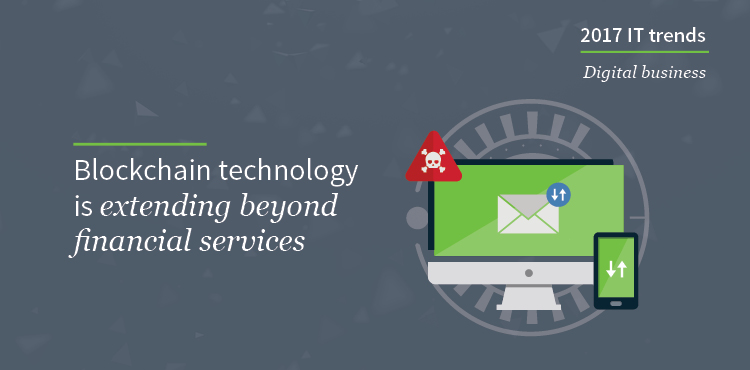TRANSFORMATION & ORGANISATION
2017 Top Digital Business Trends: Centralised transactional models are coming under attack
In most industries, central ‘authorities’ exercise control over the community of participants and as a result, claim that they have a reason to charge a premium for processing transactions.
February 6, 2017

 In most industries, central ‘authorities’ exercise control over the community of participants and as a result, claim that they have a reason to charge a premium for processing transactions.
In most industries, central ‘authorities’ exercise control over the community of participants and as a result, claim that they have a reason to charge a premium for processing transactions.
These centralised transaction models are beginning to be disrupted by peer-to-peer platforms like Blockchain, which support micro transactions that are virtually free of charge and can be performed in real time and at scale.
In the last few months we’ve seen Blockchain technology extending beyond the financial services community into the world of consumer goods and other sectors. It’s even being used to eliminate counterfeiting.
Disrupting the disruptors
The fact that today’s digital disruptors are themselves being disrupted by decentralised transaction models illustrates the potential impact of these platforms. Uber, for example, operates according to a centralised transactional model. It acts at the middleman, and takes its 20─30% cut of the cost of the ride.
But in some markets Uber is being disrupted by a small start-up called Arcade City which uses a Blockchain platform to provide the same service. In their case, the transaction is peer-to-peer: they open up a ledger between the driver and the passenger directly. The passenger and the driver negotiate on the price and Arcade City takes its 5─10% of whatever price they agree upon.
Another good example is the announcement by the Australian Stock Exchange (ASX) that they will launch a Blockchain-based settlement platform. This will allow near-realtime settlement of equity trades, for a fraction of the current cost charged by legacy settlement companies. It’s easy to see how this can disintermediate traditional models.
We also believe a peer-to-peer transactional model will be fundamental to ensure the commercial viability of many Internet of Things (IoT) applications, where the payload data and the charge is minute, and time is of the essence. IoT, to be truly prolific, will require a peer-to-peer transactional model that is real-time, ultra-low cost or free, supports micro-transactions at scale, and provides the required security – all very much part of the promise Blockchain presents.
We believe that in the year ahead Blockchain, or a similar technology, will continue to disrupt centralised transaction models while also addressing another shortcoming in the industry – cybersecurity.
Over the last 10─15 years, the security segment has focused on protecting the perimeter and, more recently, on detecting intrusions and defending against them. But the architecture for protecting important information hasn’t changed fundamentally.
With technologies like Blockchain ─ which involve a distributed ledger and strong encryption ─ there’s no longer a central data environment to attack. So they inherently solve many of the current cyber threats we face.
[toggle title =”Previous articles”]
– 2017 Top Digital Business Trends – #1: Renewed focus on ownership and access to data ─ and metadata
– 2017 Top Digital Business Trends – #2: Automation and DevOps becomes a business concern
[/toggle]